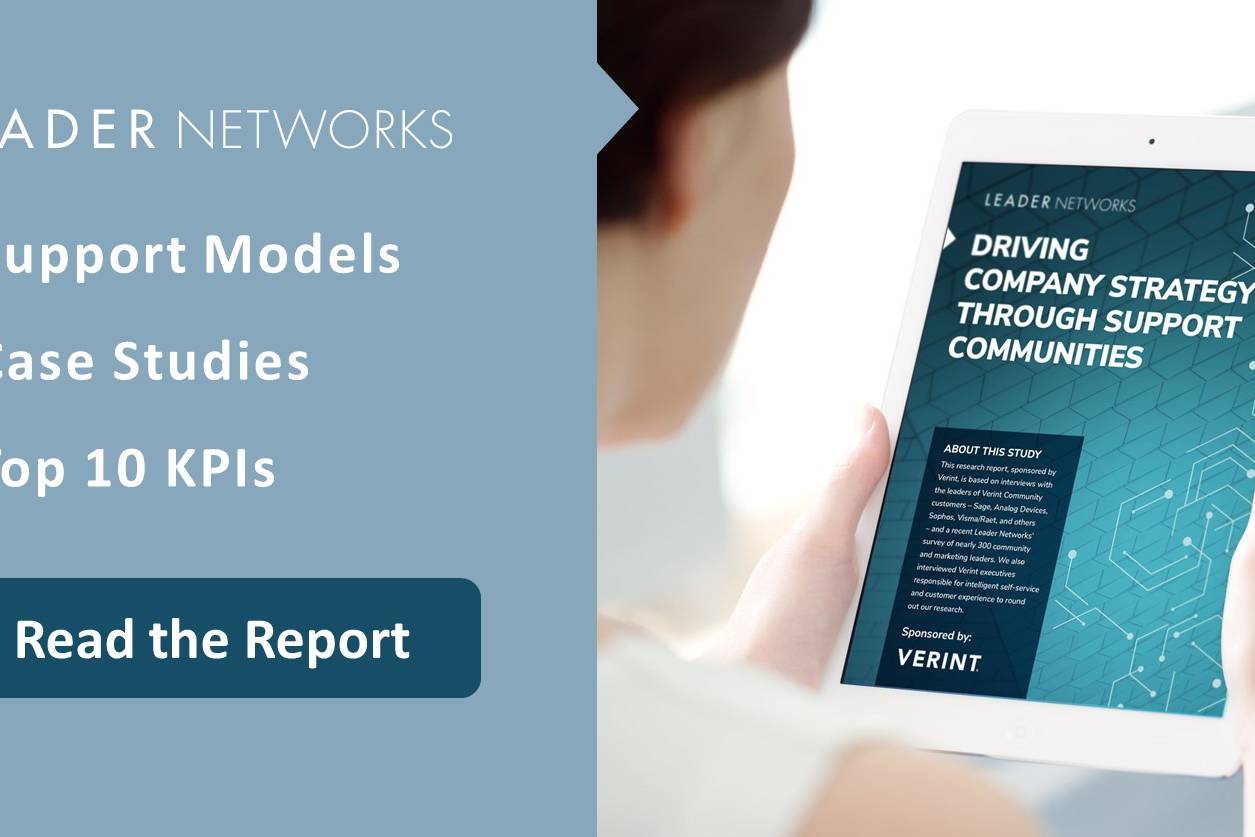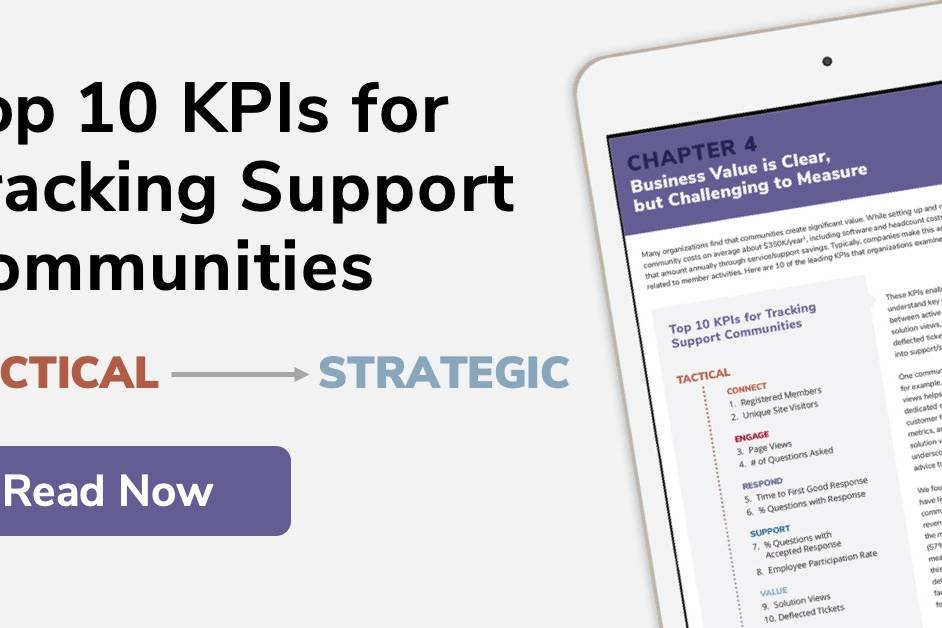Ever wonder what it takes to succeed with online community strategy and operations? Here are 56 lessons learned culled from 20 years of online community building experience.
1. To succeed at online community building, your organization must be able to give members a reason to convene – online or offline.
2. Take time to validate your community strategy with prospective members. They will likely help you make important adjustments to the plan.
3. The sponsoring organization must create a balance of “gives” to members and “gets” from members – no community can be one-sided; every community is collaborative.
4. Involve stakeholders across lines of business and the organization as a whole when determining what the community must accomplish.
5. Create a vision statement that is clear, aspirational and achievable.
6. Share the vision statement within the community so members know what to expect.
7. Define your audience clearly – who the community intends to serve will dictate how you go about serving them.
8. Create a 90-day operational plan for community; revise it every 90 days.
9. The Big Idea: People come for content and stay for community.
10. Start with an emphasis on institutional content, then plan the shift to organic (user generated) content.
11. Get to know your industry influencers on and offline.
12. Engage your industry influencers early and often.
13. Bring legal into community planning before you launch.
14. Make sure your organization’s social media policy is in effect and your people are trained on what it really means.
15. Create clear KPIs for the community and socialize them well.
16. Be sure community success measures are aligned with (at least!) 1 strategic goal of the organization.
17. Don’t expect a miracle. Communities take time to grow.
18. Communities can generate revenue with the right business model in place.
19. Cost reductions can be a short-term win for a community, but long-term ROI is built on innovations, process improvements, increased customer satisfaction and R&D.
20. Know your community’s business goals before shopping for a software vendor. Otherwise you could be buying a boat when you need to cross the desert.
21. Map your business requirements to the software offering’s strengths to enable the right choices.
22. Don’t expect community software to meet your all your needs straight out of the box.
23. Know the difference between B2B online community best practices and B2C best practices — they are different. Very different.
24. Decide early which online community model you will adopt: public, gated or hybrid.
25. If your organization is not good at customer engagement, an online community won’t solve the problem. In fact, it will make your flaws more visible. To everyone.
26. Start with a beta group of friendlies before launching your community to the world.
27. Hire skilled online community managers and treat them with professional respect.
28. Don’t launch the community until you have an online community manager in place.
29. If you don’t let staff speak directly to your biggest client in the offline world, don’t let them run the community.
30. Member acquisition for an online community is not a marketing campaign.
31. Prospective community members don’t respond well to highly-graphical invitations. They think it is marketing spam.
32. Prepare a weekly or monthly newsletter – it will drive about 60% of your traffic in the first year.
33. Outreach often to members to invite them into discussions. They are unlikely to come in on their own at first.
34. Create an outreach database to log member interactions: who, when, why, what happened?
35. Use the “three bears” model for member outreach: not too much, nor too little. Just right means testing, watching and responding to member behavior, tenure and intimacy.
36. Create an editorial calendar for the community. You need to know where content is coming from and when it is going online.
37. Make sure you have low risk (e.g. polls), mid risk (comments, document sharing) and high risk (discussions, interviews) features in the community.
38. Think through the process impact of features and document workflows to ensure closed-loop cycles.
39. Members who upload a photo in the profiles area are 7X more likely to post in the future.
40. Establish a baseline for key measures before the community starts so you know when success happens.
41. Develop an “inner circle” of select members who will form the core of the community and keep it growing over time.
42. Ask your members’ opinion about topics that matter. They are smart and insightful and can help you steer the ship.
43. Integrate the community operations into the lines of business. Communities can help fuel conference attendance, support new product launches and identify early market trends.
44. Share your findings strategically. If you spot a trend or a customer dissatisfaction issue brewing, let the business know.
45. Keep your executives informed on community successes as well as challenges.
46. Make every-day heroes out of your members – let them tell their story.
47. Don’t use a community to sell to members. They will be disappointed and will stop participating.
48. Measure what matters. Your community will become what you measure — plan accordingly.
49. Give your online community a “health check” every 6-9 months to ensure you are making progress on your chosen goals.
50. When discussions are quiet, talk to yourself online. Eventually someone will empathize and join the conversation.
51. Don’t take down posts you don’t agree with. Instead, engage in the conversation with transparency.
52. Put a crisis management plan in place as well as a clear triage process. It will save you pain in the long run.
53. Use the community to do research on topics that matter to members and your company. Everybody wins.
54. Blend offline and online member engagement whenever possible.
55. Even the busiest of members will participate if they find value in the community.
56. Community is the epicenter of customer engagement. Let your members know they are heard and respected.
So many lessons, so much to learn. Good thing Leader Networks is there to help!
Warning: Attempt to read property "base" on array in /home3/trusten9/public_html/leadernetworks/wp-content/plugins/wp-user-profile-avatar/shortcodes/wp-user-profile-avatar-shortcodes.php on line 665
Warning: Attempt to read property "base" on array in /home3/trusten9/public_html/leadernetworks/wp-content/plugins/wp-user-profile-avatar/shortcodes/wp-user-profile-avatar-shortcodes.php on line 665
Warning: Attempt to read property "base" on array in /home3/trusten9/public_html/leadernetworks/wp-content/plugins/wp-user-profile-avatar/shortcodes/wp-user-profile-avatar-shortcodes.php on line 665
Warning: Attempt to read property "base" on array in /home3/trusten9/public_html/leadernetworks/wp-content/plugins/wp-user-profile-avatar/shortcodes/wp-user-profile-avatar-shortcodes.php on line 665
Vanessa DiMauro
Internationally recognized independent thought leader on social business strategy and operations with a specialty in online community. I help organizations drive top line growth through innovative digital strategy design and thoughtful execution. I have successfully led 60+ strategic social business initiatives for the world's most influential organizations over my 20 years as a social business executive and serve on a number of boards. My award-winning track-record is fueled by passion, experience and research.
My work has been covered by leading publications such as the New York Times, the Wall Street Journal and CIO Magazine and was recently named a Social Marketing Master by Forbes. As a former Executive in Residence at Babson College, Olin School of Management, I am an engaging and informational educator and keynote speaker.
18 Comments
Add comment Cancel reply
This site uses Akismet to reduce spam. Learn how your comment data is processed.




I love the entire list, but I am most fond of 17, 20 and 30.
Thanks so much Angela – This list was fun to build. As an expert CM yourself, do you have any to add to the pile?
best
Vanessa
My addition would be to focus on engagement not the number of members. So many communities make member aquisition a key performance goal totally ignoring the fact that a large community with nothing going on is still a failed community.
You can have 20k members but if no one is talking or even worse, no one is even lurking, you have failed.
My second addition is “be wary of social media.” SM is a great tool for pushing people to your community, however, if not used the right way, you may just find the community activity taking place outside of your site.
Make sure you are directing members back to your community by highlighting conversations and linking back. Asking open ended questions on a SM site like Facebook only encourages the discussion to take place there.
Hi Vanessa. This is a great list. You can add one more to the list, which will be to go through this list at least once in a month.
—
Abhishek
🙂 Great advice! Thanks, Abhishekraji
Fabulous list, Vanessa – community managers would be well served by printing this list and affixing it to their wall (assuming they’re not able to commit them to memory). I’m particularly fond of: 9, 16, 20, 39 and 50. Thanks for sharing.
I’m fond of #8. We all need to understand long-term plans are dangerous if they’re rigid. We’re doing marketing in real time now. Jack be nimble.
Barry and Dennis, Thanks for stopping by. Glad there were a few that resonated. Got any to add to the list about content and or community?
[…] read Vanessa’s work for a few years now and when she created “56 Lessons from 20 Years of Online Community Building,” a virtual tablet of commandments for the social age, I had questions. Vanessa agreed to answer […]
[…] read Vanessa’s work for a few years now and when she created “56 Lessons from 20 Years of Online Community Building,” a virtual tablet of commandments for the social age, I had questions. Vanessa agreed to answer […]
[…] read Vanessa’s work for a few years now and when she created “56 Lessons from 20 Years of Online Community Building,” a virtual tablet of commandments for the social age, I had questions. Vanessa agreed to answer […]
[…] read Vanessa’s work for a few years now and when she created “56 Lessons from 20 Years of Online Community Building,” a virtual tablet of commandments for the social age, I had questions. Vanessa agreed to answer […]
[…] read Vanessa’s work for a few years now and when she created “56 Lessons from 20 Years of Online Community Building,” a virtual tablet of commandments for the social age, I had questions. Vanessa agreed to answer […]
[…] 在最近的一次网络研讨会上,Vanessa DiMaura 针对爱德曼信任度调查报告( Edelman Trust Barometer)的诸多要点,指出网络社区如何得以解决这些问题。Vanessa DiMaura 写了一篇可谓是“社交时代的虚拟戒律碑”的《20 年在线社区搭建的 56 个教训》。 […]
[…] read Vanessa’s work for a few years now and when she created “56 Lessons from 20 Years of Online Community Building,” a virtual tablet of commandments for the social age, I had questions. Vanessa agreed to answer […]
[…] read Vanessa’s work for a few years now and when she created “56 Lessons from 20 Years of Online Community Building,” a virtual rule book of community building strategies for the social age, I had questions. Vanessa […]
[…] the basics of community building: Vanessa DiMauro’s 56 Lessons from 20 Years of Online Community Building is packed full of actionable tips that are applicable across all manner of community sites. Her […]